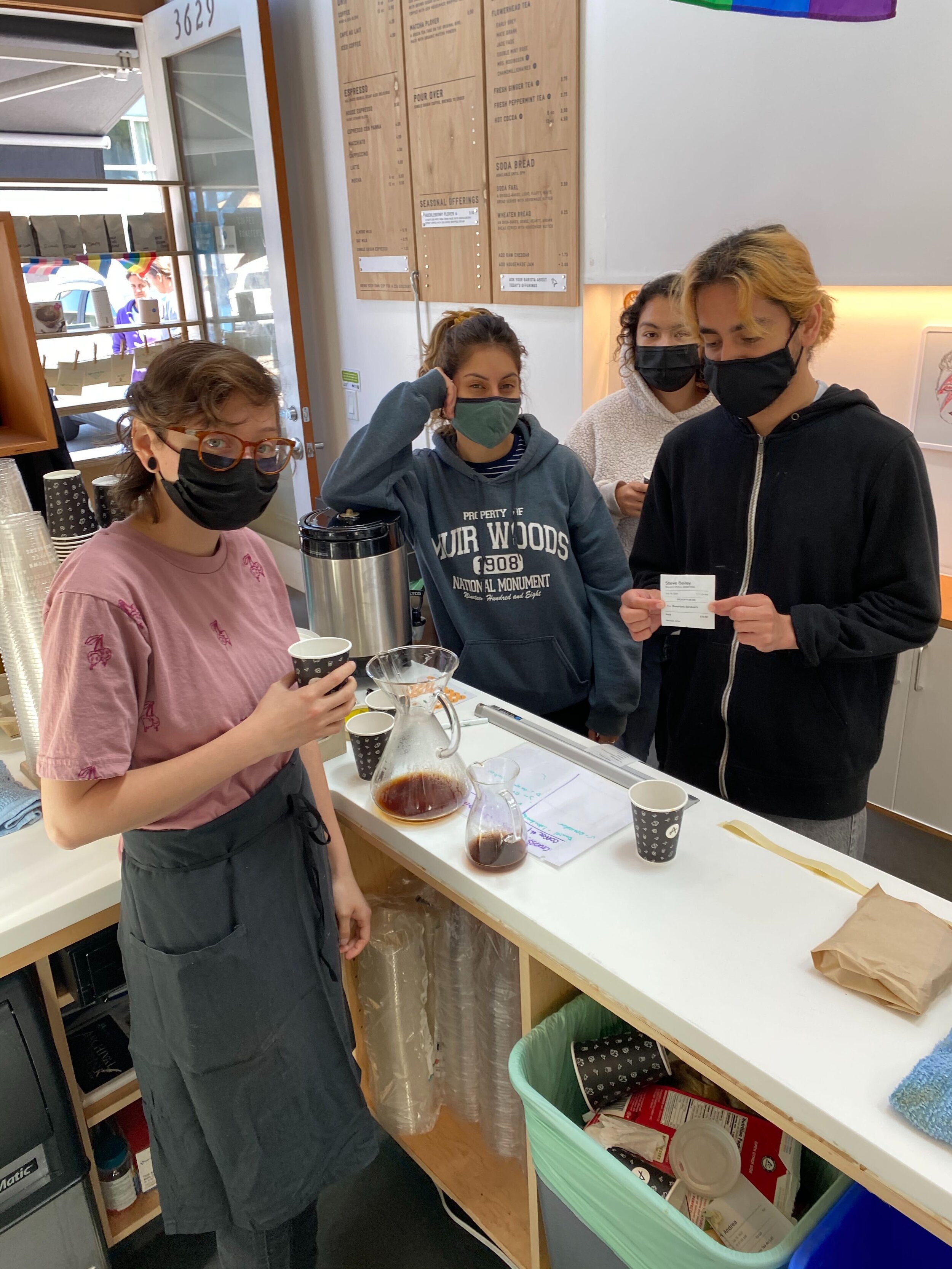With three blends, one decaf, and anywhere from five to seven single origin coffees on our menu at the same time, it can be a little bit of a challenge for everyone at Andytown to remember what each coffee tastes like. To make sure we’re all on the same page and stay calibrated, we do regular team exercises on a weekly basis!
At the roastery, we evaluate coffees from the previous day by using a brewing method called cupping. Ground coffee is placed into small bowls and brewed with hot water. After letting it sit for a few minutes and skimming off the floating coffee grounds, we take a spoonful of slightly cooled coffee and spray it across our palate through aspiration (or slurping). This method allows us to taste the most delicate qualities in the coffee, and is mainly used to help us evaluate if our roasts are on track. There are a few of us who cup daily and compare our tasting notes to make sure the coffees are meeting our standards and expectations.
Before the pandemic, the production team used to cup together to evaluate coffees. The discussion that happens afterwards is the most important part of calibration! From left to right: Lauren, former roaster, Tony, Production Floor Manager, Corey, Director of Coffee Production
Before the pandemic, the production team would also participate in cuppings so they could practice and become familiar with our coffees. Since then, we’ve adapted by brewing one or two coffees in the morning a few times a week during our morning huddles. Sometimes we’ll reveal what coffees we’re tasting, and other times we keep it a mystery so that everyone can make educated guesses. We focus on evaluating the tasting notes in order to guess what coffee it is, and share our thought process. Doing this allows team members to familiarize themselves with our coffee, as well develop their coffee vocabulary and become more comfortable with deliberating their evaluations.
Adam, Lead Production Assistant and the production team getting ready to drink a mystery coffee during morning huddle.
At our cafes, baristas prepare espressos and drip coffee before opening the shop, and are well calibrated to our blends. But what about our single origins? Like in our production huddles, baristas at cafes will brew coffee throughout the week during downtime and go through the same process of evaluating and deliberating.
The team at 3629 Taraval comparing two different coffees! From left to right: Brittany (General Manager), Valeria, Jazmin, Daniel
Calibration is a continuous process. And even though it can take time for folks to learn the menu, or feel really confident in their evaluations, it’s one of our favorite things to do. It’s fun for us to learn about new coffees, and also learn about the different flavors we all experience in a cup!



